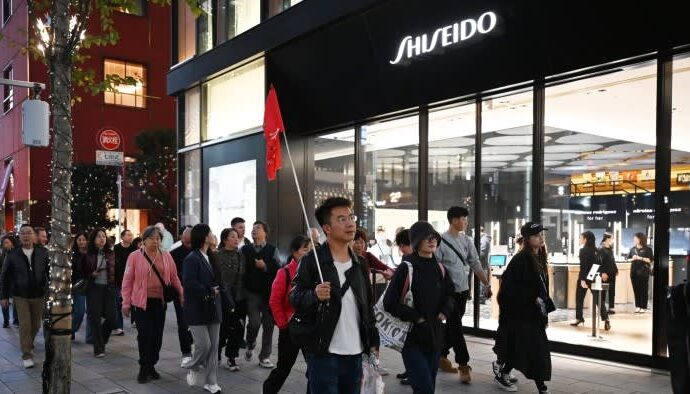
Receive free Asia-Pacific economy updates
We’ll send you a myFT Daily Digest email rounding up the latest Asia-Pacific economy news every morning.
Back in the day, US food diplomacy was easy. Arnold Schwarzenegger (as it might be) would turn up in Tokyo, pose in a supermarket with grapes and bell peppers and order Japan to eat more American produce.
Last week, as China banned Japanese seafood imports and dialled-up the anti-Japanese rhetoric on the release of treated radioactive water into the sea, the US ambassador, Rahm Emanuel, travelled 300km north to Fukushima. He prominently ate local fish, shopped for local peaches and vowed to feed them to his family. The message to China was clear: stop messing with our friends, Japan’s fish and fruit are fine.
The complexity for investors, as many of them have voiced on the sidelines of recent conferences in Asia, lies in the broad reset of thinking that this swerve of US diplomatic priorities seems to imply. Since arriving in Tokyo nearly two years ago, Emanuel has made a habit of taking an undiplomatically strident line on China: the pivotal questions are how much of this stridency is licensed, how much is actually now permanent, cross-party Washington consensus, and how much, realistically, is it ever likely to scale back?
The answer matters profoundly, say fund managers, because of the ever rising pressure to make a call on China’s investability over the next 20 years and the increasingly sizeable geopolitical component of that calculation.
There is already some fine work on the subject. In a note published last week by the Nomura Research Institute, the economist Takahide Kiuchi warned that, between them, the US and China were leading the world into a “quiet crisis”.
And conveniently for those seeking more immediate guidance, the Asia investment conference season is now in full cry. Last week the jamboree host was JPMorgan; this week it is concurrently Mizuho, Bank of America and Jefferies, next week it will be CLSA, BNP Paribas and Goldman Sachs. Intriguingly, one of the most consistent framings of the China question being put to the experts and analysts on parade at each of these bunfights has been whether China’s economy is undergoing “Japanification”.
The term has been kicking around in the context of China analysis for some time. And it works because it neatly reduces a very large suite of investor concerns into a more binary buy-sell problem: does China escape its woes in a couple of years or does it endure one or more “lost decades”, as did Japan through the 1990s and 2000s?
The obvious starting point with this line of inquiry has been to compare the many features that drove the inflation of Japan’s property bubble in the late 1980s with the many features it shares with China’s today. Then follows an extrapolation on whether the great rotting heap of problems that resulted from the bursting of Japan’s bubble will also be left in the wake of China’s.
Some of this theorising is convincing, but there are a few too many “yes, but” differences (population size, per capita income, political regime etc) for the analogy to be completely satisfying. In some cases, like the faster pace of demographic decline, China’s current problems actually look more threatening.
But in a report published in mid-August, and in separate discussions around it, Citi economist Johanna Chua introduces two additional factors to the analysis, both of which give the Japanification framing greater relevance.
The first of these is the less measurable but still vital concept of collective trauma — the circumstances that impose caution on individuals, households and the private sector over the long term, lowering demand and driving the habit of risk-taking out of daily life. In Japan’s case, the sheer scale of the bubble and its collapse provided this trauma. China’s, argues Chua, was its experience with Covid-19 — and the profoundly unsettling discovery that the government did not have everyone’s back in terms of financial assistance and protection of savings.
A second factor, suggests Chua, is geopolitics, in particular the relationship with the US. Japan’s frictions with the US in the 1990s were largely confined to trade and ultimately resolved by, among other measures, Japan’s decision to substitute auto exports for local production in the US. The current challenges facing the US-China relationship are very much greater — and likely to be very much more resistant to any equivalent quick fix.
But as an answer to the broad Japanification question, the soured geopolitics are critical. Fundamentally, it asks whether an investor pondering the investability of China is looking at cyclical or persistent threat to growth. Without any clear exit route from the current state of US-China tensions, the latter, unfortunately, seems more likely.


